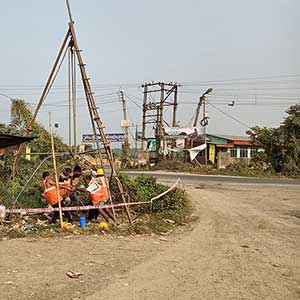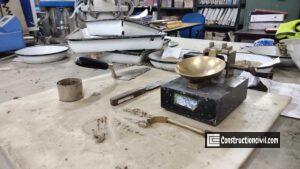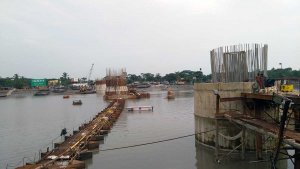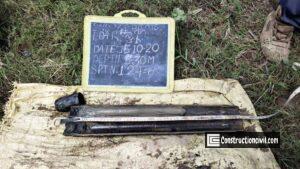Geotechnical investigations are carried out to obtain necessary data related to engineering properties of soil for proposed structures’ foundations and the repair of distress earthworks for other types of structures caused by subsurface conditions. The geotechnical investigation includes surface and subsurface exploration of a site. Subsurface exploration usually requires soil sampling and laboratory tests. In contrast, surface exploration can include geologic mapping, geophysical methods, and photogrammetry.
- Foundation soil and rock condition are primary information required for the economic design and construction of any structure.
- Required for Soundness, Safety and longevity of Structures

Also, Read: SPT Test for Soil Procedure, Refusal Conditions & Correction
Geotechnical Investigation Objectives:
- The primary objective of the geotechnical investigation is to find out the nature of the soil and rock deposit.
- As per the foundation requirement, the depth and thickness of various soil types and rock strata can be obtained after geotechnical investigation.
- It helps to identify the location of the Ground Water Table(GWT).
- After geotechnical investigation, in-situ soil properties can be obtained by performing different Subsurface exploration and field tests (SPT, DCPT, SCPT, Vane Shear Tests, PMT etc.)
- The collection of soil and rock samples for determining engineering properties in the laboratory is under geotechnical investigation.
- Based on the available data after geotechnical investigation, the foundation type and depth can be decided.
- Geotechnical engineering assessment of foundations regarding their load-bearing capacity and settlement aspects shall be possible.
Also, Read: Ground Improvement Techniques – Vertical Drain & Stone Column
Geotechnical Investigation Stages:
Reconnaissance Stage:
- Soil and groundwater conditions
- Topography, drainage pattern, vegetation
- Condition of existing structures
- Suitability of site for the proposed project
- Types of soil and rock formations from geology
- Presence of natural resources
- Stream pattern, if any
- Seismic activity in the area
Planning of Geotechnical Investigation:
Planning of geotechnical investigations includes the following stages.
- Location of geotechnical investigations.
- Numbers of geotechnical investigations (i.e.) Boreholes
- Depth of investigation.
Guidelines for Location, Nos and Depth of Borehole:
- IS: 1892-1979 – Code of practice for subsurface investigation for foundations
- IRC: 78-2014 – Standard specifications and code of practice for road bridges, section-Vii: Foundations and substructures (revised edition) – Appendix-2 under clause no-704.3
- Specification for road and bridge works, fifth revision, 2013 of MORTH by IRC -section 2400 (surface and subsurface investigation), section 2100 (open foundation), section 1100 (pile foundation) and section 1200 (well foundation)
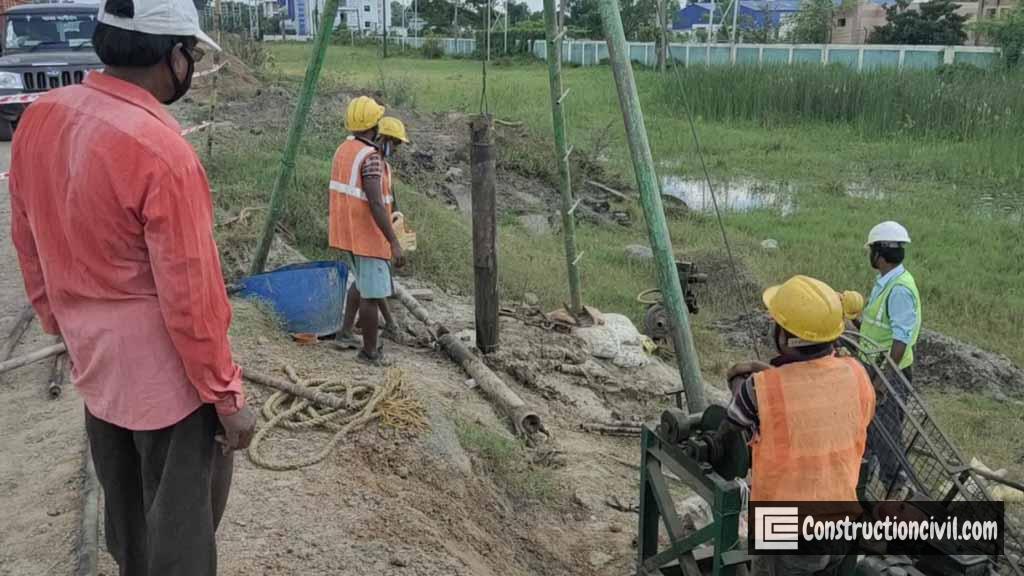
Also, Read: Soil Reinforcement Methods – Advantages and limitations
General Locations of Investigation for Structure:
- Substructure: Pier and abutment locations for the following Structures (if any):
- Major bridges
- Minor bridges
- Grade separators/flyovers
- Vehicular underpasses (VUP)
- Overpass
- ROB (i.e. bridge over railway track)
- RUB (i.e. bridge under railway track)
- Pedestrian and cattle underpasses (PUP/CUP)
- Culverts (pipe or slab or box)
- Foot over bridges (FOB)
- Approach embankment locations for all the following structures (if any):
- Major and minor bridges
- Grade separators/flyovers/vehicular underpasses (VUP)
- ROB (i.e. bridge over railway track)
- RUB (i.e. bridge under railway track) / overpass
- Pedestrian and Cattle underpasses (PUP & CUP)
- Any running embankment locations having a height of 6.00 m and above
- Any building like administrative building and toll booths (if any)
- Pond and waterlogged area/ swampy locations (if any)
- Hill and valley slope, including landslide locations (if any)
Also, Read: Vibroflotation, Blasting & Dynamic Compaction – Ground Improvement
The Minimum Number of Geotechnical Investigations for Foundation:
For Shallow/Pile/Well Foundation in Soil or Rock:
- As per IS: 1892 (Reaffirmed 1997): At an interval of 50m centre to centre (Ref: Clause No. 2.3.2.1) shall be maintained.
- As per IRC: 78 – 2014 (Structure foundations in soil): Investigations shall cover the entire length of the bridge and also extend on either side for a distance about twice the depth below the bed of the last main foundation (Ref: Clause No. 3.2 of Appendix 2 of IRC:78-2014).
- As per IRC: 78 – 2014 (Structure foundations in rock): One drill hole per pier and abutment (Ref: Clause No. 3.2 of Appendix 2 of IRC:78-2014) should be made.
- As per MORTH technical specification, fifth revision, 2013:
- It should be at each pier and abutment location of the bridge (Ref: Clause No. 2402.1 of Section 2400).
- In the case of viaducts on either side of the bridge, bores shall be taken at each foundation of the viaduct spans(Ref: Clause No. 2402.1 of Section 2400).
- Suppose foundation strata variation appreciably affects the construction (especially in the case of bridge foundations resting on rock). In that case, it will be necessary to take additional bores in the transverse direction and establish the underlying strata’s complete profile (Ref: Clause No. 2402.2 of Section 2400).
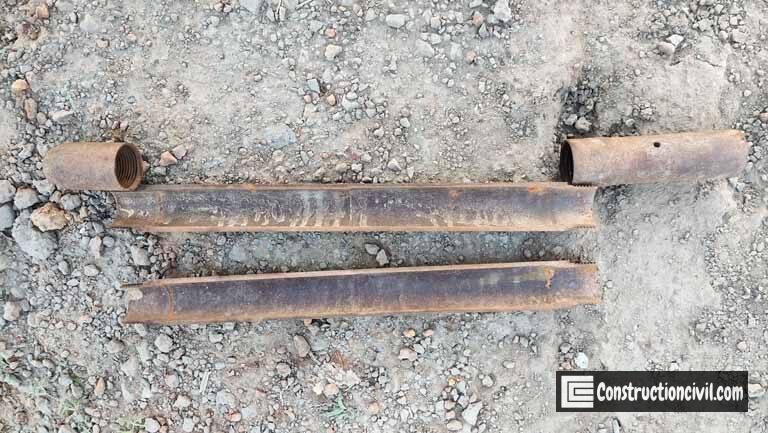
Also, Read: PVD Drain Installation for Ground Improvement
Minimum depth of Geotechnical Investigation(Beyond Depth of Foundation):
For Shallow Foundation in Soil and rock:
- As per IS: 1892 (Reaffirmed 1997), Structure foundations in soil: Minimum depth of geotechnical investigation beyond the depth of the foundation should be one and half times the width of the foundation (Ref: Table 1 under clause no. 2.3.2.1).
- As per IS: 1892 (Reaffirmed 1997), structure foundations in rock:
- For massive and sound rock, the minimum depth of geotechnical investigation should be half of the effective width of the foundation.
- For moderately jointed and foliated rock, the depth of the geotechnical investigation will be the effective width of the foundation.
- For heavily jointed and weathered rock, the depth of the geotechnical investigation will be two times the effective width of the foundation.
- Minimum 3.00m geotechnical investigation depth should be considered inside rock mass (Ref: For buildings, clause no. 4.9.3.2 of IS:13063).
- As per IRC: 78 – 2014 (Structure foundations):
- The minimum depth of geotechnical investigation beyond the depth of the foundation should be one and half times the proposed width of the foundation.
- If any unsuitable/questionable foundation material is found beyond the depth of investigation stated above, then exploration shall be extended to a sufficient depth into a firm or stable soil or well into the sound rock (Ref: Clause No. 3.2, 6.2.2, 6.3.2 and 7.2.2 of Appendix-2 of IRC:78-2014)
- As per MORTH technical Specification, Fifth Revision, 2013:
- The geotechnical investigation depth for the foundation will be one and half times the proposed width of the foundation.
- Suppose any suitable foundation material of doubtful bearing capacity is found beyond the depth of investigation stated above. In that case, exploration of the depth of investigation shall be extended to 4 times the width of the foundation or till firm and stable soil or rock is achieved(Ref: Clause No. 2403.1 of Section 2400).
- If the rock is met, the drilling depth into rock having a ROD of more than 75% may be limited to 3 meters. (Ref: Clause No. 2403.1 of Section 2400)
Also, Read: Major Role of Ground Improvement in The Structure Foundations
For Pile/Well Foundation in Soil and rock:
- As per IS: 1892 (Reaffirmed 1997): The minimum depth of geotechnical investigation beyond the depth of the foundation should be one and half times the width of the foundation from the bearing level, i.e. toe of pile or bottom of well (Ref: Table 1 under clause no. 2.3.2.1).
- As per MORTH technical specification, fifth revision, 2013(for soil): Geotechnical investigation should be 1.5 times the estimated length of the pile in soil or 15m below the proposed founding Level (Ref: clause no. 1102.1 of section 1100 for “Pile Foundation” and clause no. 1202.3 of section 1200 for “Well Foundation”).
- As per MORTH technical specification, fifth revision, 2013(for rock) :
- Geotechnical investigation depth would be 15 times the diameter of the pile in weak/jointed rock but a minimum of 15m in such rock.
- Geotechnical investigation depth would be four times the diameter of the pile in hard rock but a minimum of 3m in such rock (Ref: Clause No. 1102.1 of Section 1100 for “Pile Foundation” and Clause No. 1202.3 of section 1200 for “Well Foundation”).
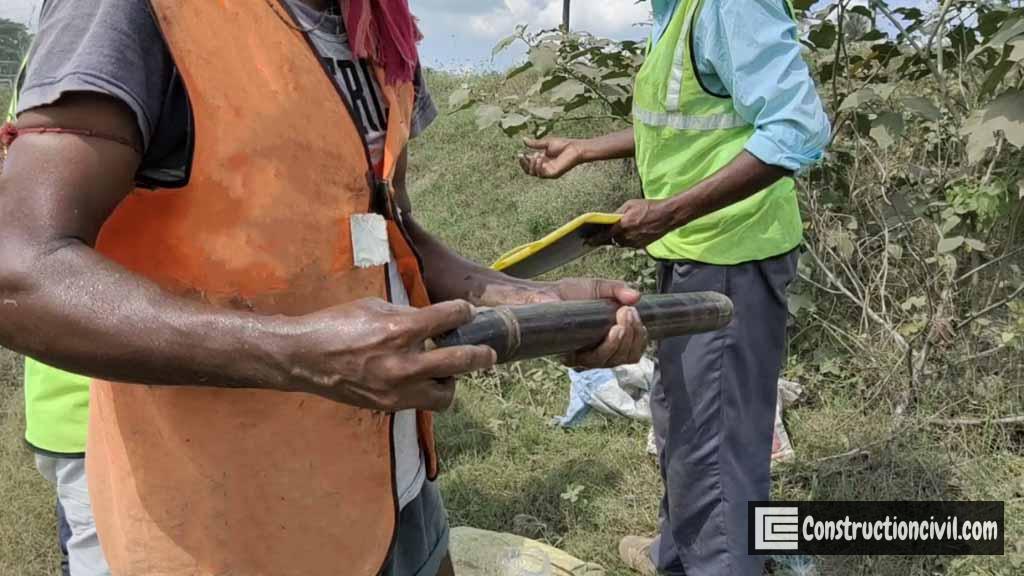
Also, Read: Top 7 Ground Improvement Techniques in Civil Engineering
Geotechnical Investigation Tests:
Field Investigation:
- Vertical loading tests
- Deep penetration tests – Standard penetration test and Cone penetration tests
- Vane shear tests
- Measurement of density of the soil
- Pressure meter test
Laboratory Investigation:
- Physical tests:
- Liquid and plastic limits
- Grain size analysis
- Specific gravity
- Natural moisture content
- Unit weight
- Consolidation test ( including pre-consolidation pressure )
- Shear strength: Unconfined compression
- Triaxial compression
- Direct shear permeability test
- Chemical tests:
- Soluble salt content: Chlorides and sulphates
- Calcium carbonate content (if warranted)
- Organic matter content (if warranted)
- Groundwater:
- Chemical analysis, including pH determination
- Bacteriological analysis ( if necessary )
- Rock drilling:
- Visual examination
- Petrographic analysis
- Unit weight
- Compressive strength
- Water absorption
- Shear strength
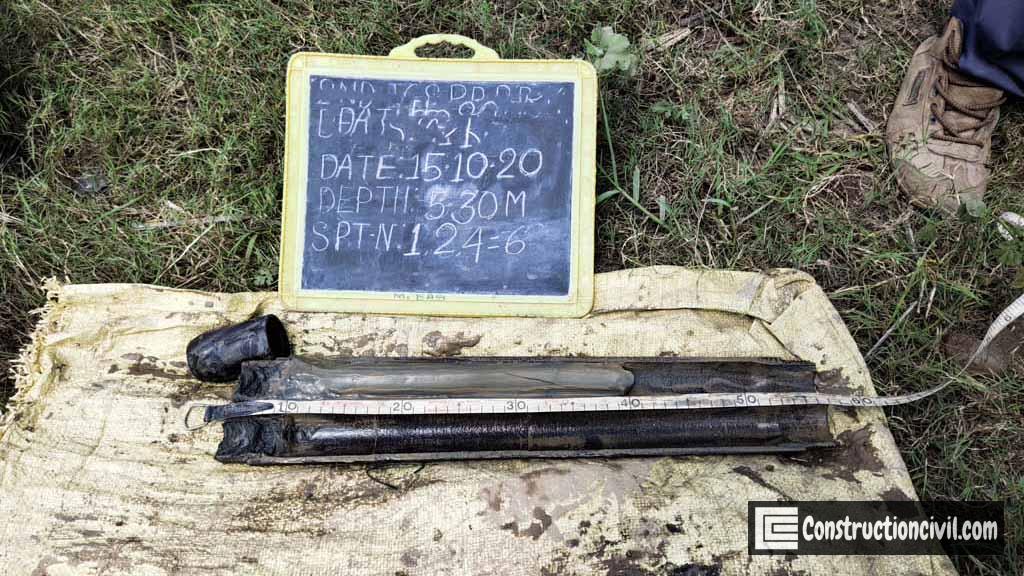
Also, Read: Laboratory Test on soil – Procedures and Objective
Geotechnical Investigation Report:
- The geotechnical investigation report contains the area’s geological history and geographical background.
- The total scope of work and a plot plan showing the locations of all tests should be recorded in the report.
- A brief description of the procedure adopted for field and laboratory tests should be recorded.
- Detailed bore-log/drill-log in the approved format should be maintained.
- Laboratory test results in approved tabular and graphical form with the summary should be attached.
- True cross-sections/profiles of all boreholes and trial pits should be present.
- All geotechnical engineering parameters should be as follows.
- Recommendations on geological and lithological information of the area should be mentioned in the report.
- The details of the landslide, if any, should be recorded.
- The report contains the recommendation for the foundation system of structures, and recommendations for ground treatment/improvement, foundation and embankment/subgrade treatment in case of weak sub-soil, expansive clay, liquefaction and artesian condition etc.
